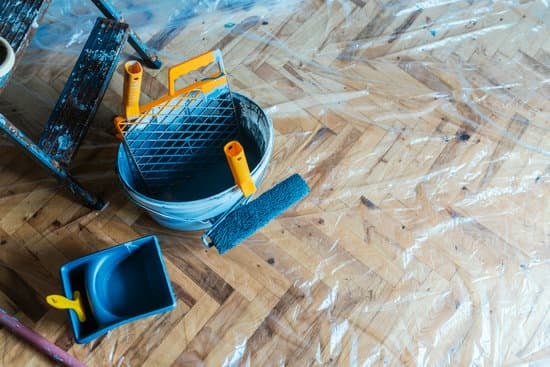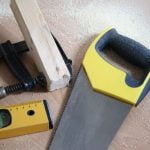Can you top up your mortgage for home improvements? Many homeowners may find themselves asking this question when considering making upgrades to their property. Topping up your mortgage for home improvements can be a viable option for funding renovation projects, but it’s important to understand the process and weigh the pros and cons before making a decision.
When it comes to financing home improvements, topping up your mortgage can provide access to additional funds that can be used to upgrade your property. In this article, we will explore the concept of mortgage top-up, how it works, eligibility criteria, tips for maximizing value, alternatives to consider, and the application process. We will also provide real-life examples of homeowners who have successfully utilized this option for their own home improvement projects.
Understanding the ins and outs of topping up your mortgage for home improvements is crucial in making an informed decision that aligns with your financial goals and aspirations for your property. From evaluating the benefits and drawbacks to learning about eligibility requirements, our comprehensive guide will help you navigate this financing option with confidence.
What Is Mortgage Top-Up and How It Works
Mortgage top-up is a financial option that allows homeowners to borrow additional funds on top of their existing mortgage in order to make home improvements. This can be a convenient way for homeowners to finance renovations, repairs, or upgrades without having to take out a separate loan.
When you top up your mortgage for home improvements, the additional funds are added to your existing mortgage balance, and you will pay it off over the remaining term of your mortgage. This means that instead of making separate payments for a personal loan or line of credit used for home improvements, the extra amount is simply incorporated into your regular mortgage payments.
One major advantage of using a mortgage top-up for home improvements is that it often comes with lower interest rates compared to other types of loans. Additionally, the interest paid on the extra amount may be tax-deductible, providing potential cost savings for the homeowner. However, it’s important to carefully consider the long-term financial implications and ensure that you can comfortably manage the increased monthly payments.
| Pros | Cons |
|---|---|
| Lower interest rates | Potential long-term financial implications |
| Possible tax-deductible interest | Increased monthly payments |
Before deciding whether topping up your mortgage for home improvements is right for you, it’s essential to carefully assess your financial situation and consider alternatives. Additionally, researching and understanding the eligibility criteria and application process can help in making an informed decision about pursuing a mortgage top-up for home improvements.
Pros and Cons of Topping Up Your Mortgage for Home Improvements
Topping up your mortgage for home improvements can be a great way to finance renovations or upgrades to your property. However, it’s important to weigh the pros and cons before making this decision. Here are some of the advantages and disadvantages to consider:
Pros:
- Lower interest rates: By using your mortgage to finance home improvements, you can take advantage of the lower interest rates typically offered on mortgages compared to personal loans or credit cards.
- Tax benefits: In some cases, the interest paid on a mortgage top-up for home improvements may be tax-deductible, providing potential savings for homeowners.
- Larger loan amounts: Topping up your mortgage can allow you to borrow larger amounts of money compared to other types of loans, giving you more flexibility for big renovation projects.
Cons:
- Extended repayment period: Topping up your mortgage means adding to your existing loan, which could extend the time it takes to pay off your home. This may result in paying more interest over the long term.
- Risk of foreclosure: If you’re unable to meet the increased mortgage payments from topping up, there is a risk of losing your home through foreclosure.
- Fees and charges: There may be additional fees associated with topping up your mortgage, such as valuation fees or early repayment charges, which can add to the overall cost.
When considering whether to top up your mortgage for home improvements, it’s important to carefully evaluate these factors and determine if it is the right choice for your financial situation and renovation needs.
Eligibility Criteria for Mortgage Top-Up for Home Improvements
Credit Score and Payment History
One of the key eligibility criteria for a mortgage top-up for home improvements is a good credit score and a solid payment history. Lenders will review your credit history to determine if you are a reliable borrower.
A low credit score or a history of missed payments can make it difficult to qualify for a mortgage top-up. It’s important to ensure that you have a healthy credit score and a clean payment history before applying for a mortgage top-up.
Equity in Your Home
Another important factor in determining eligibility for a mortgage top-up is the amount of equity you have in your home. Equity is the difference between the current market value of your home and the amount you owe on your mortgage.
The more equity you have, the more likely you are to be approved for a mortgage top-up. Lenders typically require homeowners to have at least 20% equity in their homes before they can qualify for a mortgage top-up.
Stable Income
Lenders also consider the stability of your income when determining eligibility for a mortgage top-up. Having a stable source of income and being able to demonstrate that you can afford the increased monthly payments is crucial. Lenders will often review your employment history, income level, and debt-to-income ratio to assess your ability to repay the additional funds borrowed through the mortgage top-up.
Considering these eligibility criteria can help you determine if you qualify for a mortgage top-up for home improvements, and whether it’s the right choice for you. Each lender may have slightly different requirements, so it’s important to do thorough research and consult with qualified professionals before making any decisions about topping up your mortgage for home improvements.
Tips for Maximizing Value When Topping Up Your Mortgage for Home Improvements
When considering topping up your mortgage for home improvements, it’s important to maximize the value of this financial move. By following certain tips, you can ensure that you are making the most out of your investment and creating a more valuable property in the long run.
Plan Your Renovations Wisely
One of the key tips for maximizing value when topping up your mortgage for home improvements is to plan your renovations wisely. Prioritize projects that will add significant value to your home, such as kitchen or bathroom remodels, adding additional living space, or improving energy efficiency. These types of upgrades not only enhance your living experience but also increase the appeal and resale value of your property.
Get Multiple Quotes
Before embarking on any home improvement project, it’s crucial to obtain multiple quotes from reputable contractors. This not only ensures that you are getting a fair price for the work, but it also
Consider Long-Term Benefits
When deciding which improvements to make with a mortgage top-up, it’s important to consider the long-term benefits. While some upgrades may have immediate visual impact, others like structural repairs or maintenance work may not be immediately noticeable but play a crucial role in maintaining the value and safety of your home over time.
Don’t just focus on cosmetic changes; think about how each improvement will contribute to the overall value and functionality of your property for years to come.
Alternatives to Topping Up Your Mortgage for Home Improvements
When considering home improvements, topping up your mortgage is not the only option available. There are several alternatives to consider before making a decision on how to finance your renovation project. Here are some alternatives to topping up your mortgage for home improvements:
- Personal Loan: Taking out a personal loan can be a quick and convenient way to finance your home improvement project. This option allows you to borrow a specific amount of money with a fixed interest rate and repayment term.
- Home Equity Line of Credit (HELOC): A HELOC is a revolving line of credit that uses the equity in your home as collateral. It gives you the flexibility to borrow funds as needed, similar to a credit card, and may have lower interest rates compared to other types of loans.
- Cash-Out Refinance: This option involves refinancing your existing mortgage for more than you owe and taking the difference in cash. It allows you to access the equity in your home while potentially securing a lower interest rate.
Each alternative has its own advantages and disadvantages, so it’s important to carefully consider which option best suits your financial situation and renovation needs. Keep in mind that some options may have different eligibility requirements and borrowing costs.
Before making a decision, it is recommended to consult with a financial advisor or mortgage professional who can provide personalized guidance based on your individual circumstances. These experts can help you weigh the pros and cons of each alternative and assist you in making an informed decision about financing your home improvement project without necessarily topping up your mortgage.
Remember that careful consideration of all available options can help ensure that you choose the best financing method for your specific needs without jeopardizing your financial well-being in the long run.
How to Apply for a Mortgage Top-Up for Home Improvements
If you’re considering applying for a mortgage top-up for home improvements, there are a few steps you will need to follow to make the process as smooth as possible. Here’s a guide on how to apply for a mortgage top-up for home improvements.
First and foremost, you’ll need to contact your lender to inquire about the possibility of topping up your mortgage for home improvements. They will be able to provide you with information on the specific requirements and application process. It’s important to note that not all lenders offer mortgage top-ups, so it’s best to do your research and shop around if needed.
Once you have confirmed that your lender offers mortgage top-ups, you will need to gather all the necessary documentation, including proof of income, current mortgage details, and a detailed plan of the home improvements you intend to carry out. This will help the lender assess your eligibility for a mortgage top-up and determine the amount you can borrow.
After gathering all necessary documentation, you can then proceed with completing the application form provided by your lender. The form will require detailed information about your financial situation and the purpose of the mortgage top-up. Once submitted, the lender will review your application and let you know if it has been approved.
In addition, it’s important to keep in mind that while a mortgage top-up can provide funds for home improvements, it also increases your overall debt and monthly payments. Therefore, careful consideration should be given before applying for a mortgage top-up for home improvements.
| Documentation | Details |
|---|---|
| Proof of income | Provide recent pay stubs or tax returns |
| Mortgage details | Provide current loan information & statement |
| Home improvement plan | Detailed outline of intended renovations or upgrades |
Real-Life Examples of Homeowners Who Successfully Topped Up Their Mortgage for Home Improvements
Many homeowners have successfully topped up their mortgage to fund home improvements, allowing them to increase the value of their property while spreading the cost over time. One such example is the Smith family, who wanted to renovate their kitchen and add an extension to their home. By topping up their mortgage, they were able to access the funds needed for these improvements at a lower interest rate compared to a personal loan.
Another example is the Jones family, who used a mortgage top-up to fund energy-efficient upgrades such as solar panels and insulation. Not only did this improve the comfort of their home, but it also resulted in significant savings on their utility bills. These real-life examples demonstrate how topping up a mortgage for home improvements can provide homeowners with the financial flexibility to enhance their living space and increase the overall value of their property.
By using a mortgage top-up for home improvements, homeowners can benefit from potentially increasing the equity in their property. This means that when they eventually sell, they may be able to recoup the cost of the improvements and then some, depending on market conditions. It’s important to note that success stories like these often involve careful planning and consideration of both the short-term and long-term implications of topping up a mortgage for home improvements.
Conclusion
In conclusion, topping up your mortgage for home improvements can be a viable option for homeowners looking to finance renovation projects. The concept of mortgage top-up involves borrowing additional funds on top of your existing mortgage to cover the cost of home improvements. While this can provide a convenient source of financing, it’s important to weigh the pros and cons before making a decision.
One advantage of topping up your mortgage for home improvements is that you may be able to access a lower interest rate compared to other types of loans or credit. Additionally, spreading the cost of renovations over the life of your mortgage can make it more manageable for homeowners. However, it’s crucial to consider the potential downsides, such as increasing your overall debt and extending the time it takes to pay off your mortgage.
Before pursuing a mortgage top-up for home improvements, it’s essential to assess your eligibility and explore alternative financing options. Homeowners should also carefully consider their long-term financial goals and whether topping up their mortgage aligns with these objectives. Ultimately, while topping up your mortgage for home improvements can provide a convenient way to fund renovation projects, it may not be the right choice for everyone.
Frequently Asked Questions
Can I Add Money to My Mortgage for Home Improvements?
Yes, it is possible to add money to your mortgage for home improvements through a cash-out refinance or a renovation loan. This allows you to borrow against the equity in your home to fund the renovations.
Can I Add Home Improvement Costs to My Mortgage?
Yes, you can add home improvement costs to your mortgage using options like FHA 203(k) loans or Fannie Mae’s HomeStyle Renovation mortgage. These programs allow you to finance both the purchase of the home and the cost of renovations.
Is It Smart to Use Home Equity for Home Improvement?
Using home equity for home improvement can be a smart move if you have carefully considered the costs and benefits. It allows you to access funds for upgrades while potentially increasing the value of your home. However, it’s important to consider the risks and ensure that you can afford the additional debt.

I’m thrilled to have you here as a part of the Remodeling Top community. This is where my journey as an architect and remodeling enthusiast intersects with your passion for transforming houses into dream homes.





